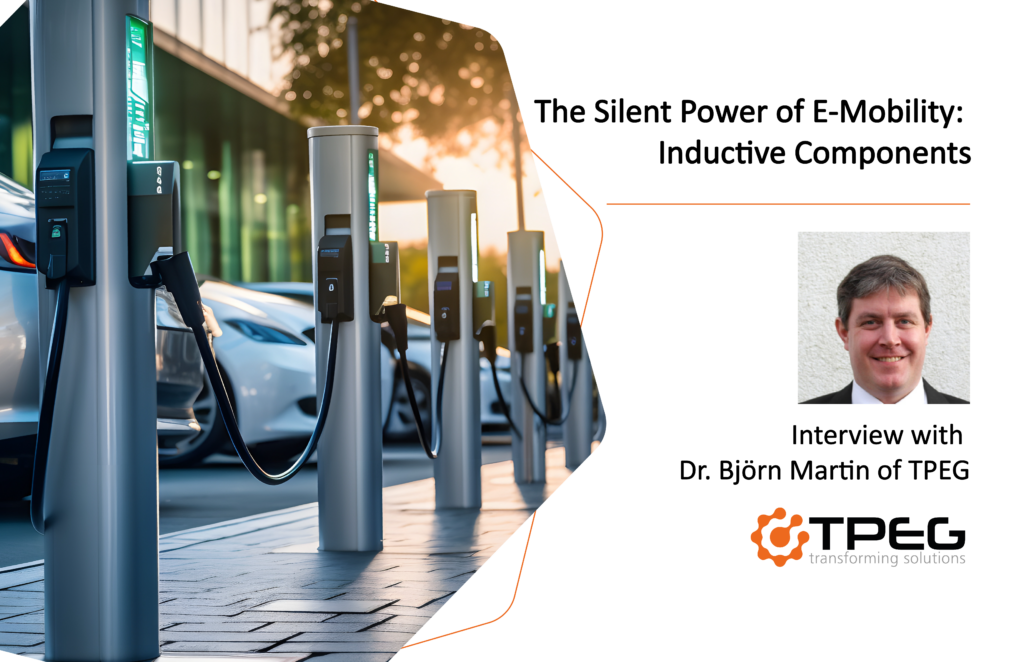
The Silent Power of E-Mobility: Inductive Components – Interview with Dr. Björn Martin of TPEG
In this interview with Dr. Björn Martin, Customer Solutions Manager at TPEG (Tech Power Electronics Group GmbH), we discuss the unsung heroes of e-mobility: inductive components.
Interview
Understanding Inductive Components
Mr. Dr. Martin, e-mobility is taking off. Can you briefly explain to our readers what inductive components actually are?
Dr. Björn Martin (TPEG): With pleasure. Inductive components utilize the fundamental principles of electromagnetism. When current flows through a coil, a magnetic field is generated. If a second coil is brought into the vicinity, a voltage can in turn be induced in it. This principle allows us to convert voltage levels, filter current, and control it specifically.
Applications in E-Mobility
You previously mentioned power transformers and inductive components for charging electronics. Can you give us concrete examples of where these components are used in the charging process?
Dr. Martin: I’d be happy to. Let’s take a fast charger with direct current (DC) as an example. The power from the grid is generally available as alternating current (AC). Our power transformers, together with a downstream rectifier, first convert this AC voltage into the desired DC voltage. In the further course of the charging process, chokes and other inductive components are then used within a DC-DC converter. They smooth out the DC current, filter out interference, and thus ensure a stable and safe charging process for the electric vehicle.
Meeting Special Requirements
You mentioned the special requirements in e-mobility. How does TPEG ensure that its components meet these requirements?
Dr. Martin: In addition to high power and a wide range of operating temperatures, the selection of materials and manufacturing technology also play a crucial role in the development of our components. For example, we use special alloys that retain their magnetic properties even when heated strongly. We also rely on optimized winding processes to maximize power density while minimizing losses.
Innovation at TPEG
Keyword innovation: How does TPEG react to new developments in e-mobility, such as bidirectional charging?
Dr. Martin: The future of e-mobility is exciting! Bidirectional charging, where electric vehicles can serve as mobile storage for renewable energy, is an interesting concept. Our research and development department is intensively investigating the resulting requirements for inductive components. The goal is to develop components that are tailored to these new application areas and further improve the efficiency of the entire charging infrastructure.
Advice for Companies
Finally, what advice would you give to companies looking for suitable inductive components for their e-mobility projects?
Dr. Martin: Various factors play a role in selecting the right components. In addition to the technical data, the expertise and service of the manufacturer are also crucial. TPEG not only offers its customers a wide range of inductive components but also provides advice on selection and can develop customized solutions.
Conclusion:
While inductive components are often overlooked, they are essential for the smooth functioning of the charging infrastructure and thus for the success of e-mobility. With its many years of experience, its deep understanding of technology, and its innovative spirit, TPEG is an important partner for companies that want to actively shape the transport transition.

